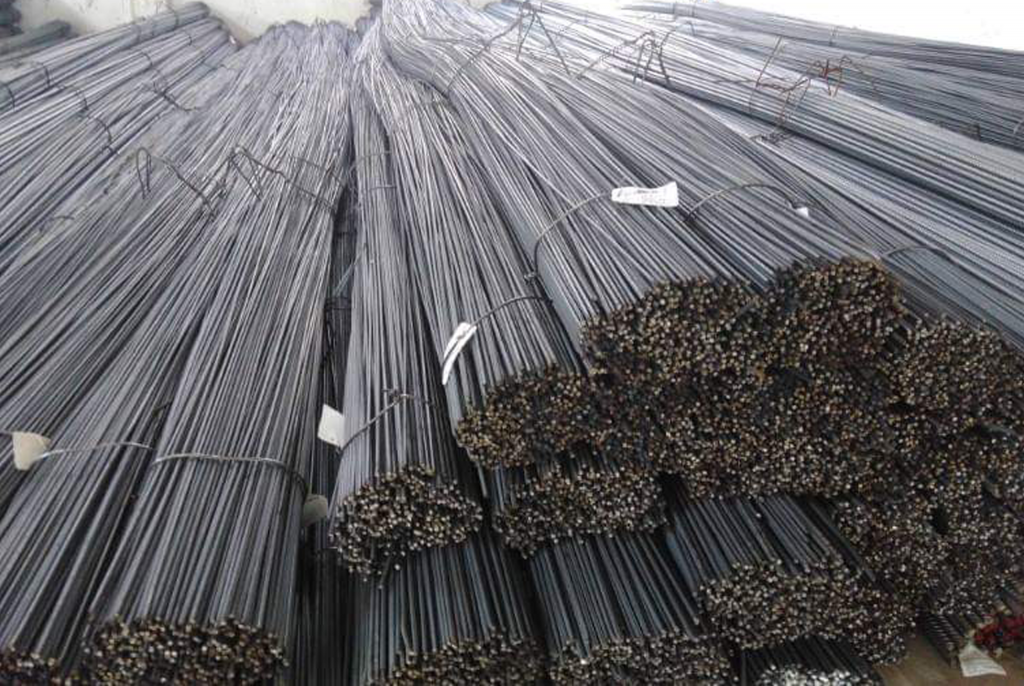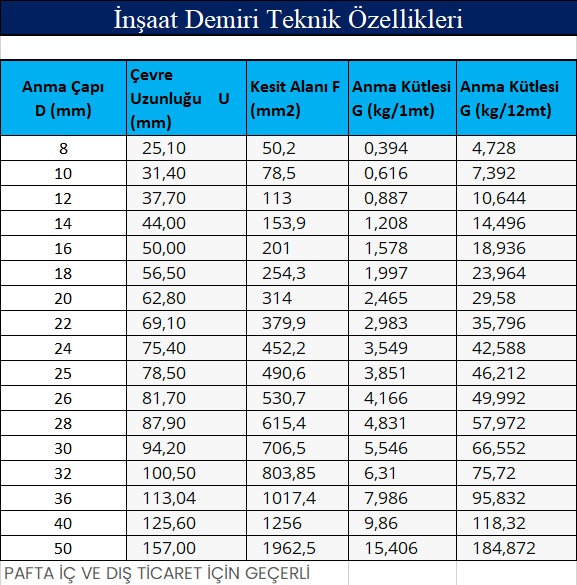- +90 216 912 14 74
- info@paftamuhendislik.com.tr
- Welcome to Pafta Mühendislik San. İç ve Dış Ticaret


Rebar, short for reinforcing bar, is a type of steel bar or steel wire mesh used in reinforced concrete and masonry structures to reinforce and hold concrete in tension. Rebar is placed in concrete to meet shear and tensile stresses in reinforced concrete structures, it is specially shaped and produced in a standard length of 12 meters. The ribs on its surface are manufactured by twisting in the cold. The good thing is that it is very unlikely to peel off from the concrete. Rebar is typically made from carbon steel and is available in a variety of sizes and shapes, including round, square and rectangular. Carbon steel iron, also called black bar, is one of the most commonly used irons in the construction field. Carbon steel iron, which is resistant to moisture and water, does not corrode easily. Raw material of construction ironIron and steel products are obtained by mixing Lead, Tin, Silica, Carbon and similar ores in certain proportions.
Usage Areas
The addition of rebar laid into concrete is to provide concrete with improved tensile strength. The rope-like surface of the rebar is designed to provide a better bond with the concrete. It is widely used in the construction of buildings, bridges and other infrastructure projects and is an important component of reinforced concrete structures.
Rebar Types
There are various types of rebar, including:
Epoxy Coated Rebar
This type of rebar is coated with a layer of epoxy, which provides additional protection against corrosion and helps extend its life.
Galvanized Rebar
Galvanized rebar is coated with a layer of zinc, which helps protect it from corrosion and extends its life.
Stainless Steel Rebar
This type of rebar is made of stainless steel and is resistant to corrosion, making it ideal for use in high humidity areas or marine environments.
Deformed Rebar
Deformed rebar has a rough, textured surface that helps improve the bond between the concrete and rebar, increasing the overall strength of the structure.
Flat (Smooth) Rebar
Plain rebar has a smooth surface and is used in situations where the bond between rebar and concrete is not that important, such as in structural elements that are not subject to tensile forces.
Threaded Rebar
This type of rebar has threads on the ends that allow it to be connected to other rebar or steel sheet connectors using nuts and bolts.
Fiberglass Rebar
This type of rebar is made of fiberglass and is used in situations where corrosion resistance is a concern. It is also lightweight and easy to use.
Welded Wire Iron
It is made by welding iron bars together in the form of wire mesh. Electrical welding method is used in wire transitions. It is used in areas such as road pavement, concrete channels, box culverts and drainage.
European Rebar
This type of rebar is more cost-effective and can withstand earthquakes, hurricanes, etc. It is not preferred in areas where natural events such as
Sheet-Metal Iron
It is a type of rebar made from a steel sheet structure, produced by heating steel parts and then allowing them to cool to prepare a plate. It is used in flooring, roof and stair structures.
Carbon Steel Iron
Carbon steel iron, also called black bar, is one of the most commonly used irons in the construction field. Carbon steel iron, which is resistant to moisture and water, does not corrode easily.
Ribbed Iron
This type of iron increases the resistance and helps to hold the concrete tightly with the indentations and protrusions on it. Ribbed iron contains carbon and manganese elements. However, when the carbon content exceeds 25%, the breakage rate increases. Thanks to the folding and welding properties of Ribbed Irons, they are preferred in the construction of highways, skyscrapers, subways, dams, business centers, ship hulls and buildings. These irons are generally produced in 12 m size. In short, there are many types of rebar. However, ribbed rebar is one of the strongest and most widely used iron types. Ribbed iron absorbs the concrete and prevents it from slipping. It should not be forgotten that ribbed iron makes column and beam structures more durable in major natural events such as earthquakes.
Whatsapp İletişim